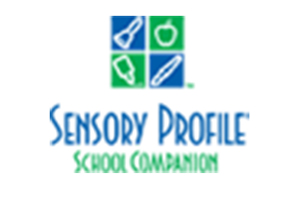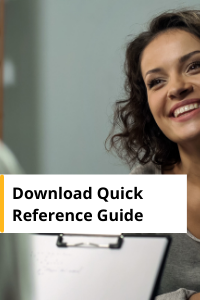Winnie Dunn, PhD, OTR, FAOTA
Age Range:3:0 years to 11:11
Norms:Criterion Referenced
Scores/Interpretation:Cut Scores
Publication Date:2006
The next version of the Sensory Profile 2 is now available. Read about the new Sensory Profile 2!
Your Scientifically-Based Choice
The Sensory Profile family of products includes the best-selling Sensory Profile, Infant/Toddler Sensory Profile, Adolescent/Adult Sensory Profile, and the Sensory Profile School Companion. The expansive age-range of Sensory Profile products allows you to confidently evaluate sensory-related difficulties in clients, from birth to geriatric.
Whatever the age of your clients — infants, child, adolescent, or adult — Sensory Profile products can help you:
- Understand the complexities of their sensory processing
- Gather critical sensory information related to home, school, and work
- Design strategies for managing daily life
Build evidence in you practice
These unique instruments offer a research-based, family-centered approach to sensory processing and provide case studies and guide you in interpretation and intervention planning. For more information about how these assessments work together click here.
For further information about the administration, scoring, or interpretation, please click on the appropriate link below:
- Adolescent/Adult Sensory Profile
- Infant/Toddler Sensory Profile
- Sensory Profile
- Sensory Profile School Companion
Sensory Profile School Companion
With the new Sensory Profile School Companion, school-based clinicians now have the ability to evaluate a child’s sensory processing skills and how these skills affect the child’s classroom behavior and performance.
Developed by the world-renown author, Winnie Dunn, PhD, OTR, FAOTA, this standardized and theoretically-based assessment involves the teachers’ perspective of the child interaction in an academic setting.
Areas of Assessment
Best Practice:
Using the Sensory Profile School Companion in conjunction with the Sensory Profile offers clinicians a comprehensive evaluation as it addresses the child’s behavior in various contexts- home, community, and classroom.
Introduction to Sensory Processing Concepts
Sensory processing is a complex set of actions that enable the brain to understand what is going on both inside your own body and in the world around you.
Let’s start with the basic idea of Sensory Processing.
First you must understand the difference between Sensory Processing and Sensory Acuity. Sensory acuity is the actual physical ability of the sensory organs to receive input, while sensory processing is the ability to interpret the information the brain has received. We address acuity needs with devices such as glasses and hearing aids. We address processing needs with changes in activities, instructions, environments and practice.
Your brain has a lot of work to do throughout the day. There is a continuous flow of information available from all the sensory systems, and the brain must sort through the information, prioritize and emphasize components, to decide both how to understand what is going on and to decide what you will do based on the information available.
When we were beginning to study sensory processing, we learned that there were two primary factors that contributed to our understanding of the overall concept of sensory processing. The first factor to consider is neurological thresholds, or the way the nervous system responds to sensory input.
The second factor to consider is self regulation strategies that a person uses; these may be associated with your temperament and personality. Self regulation strategies are the ways that people manage the input that is available to them.
Within this perspective, we talk about RESPONSIVENESS to refer to the way that you respond to demands in your life. Many things can affect your responsiveness, including the demands of an activity, the characteristics of environments or the way that a person’s self regulation strategies affect daily life. When your nervous system is responding too much, we call it hyper-responsive (or overresponsive), and when you are responding too little, we call it hypo-responsive (or under responsive). We all have times when we are hyper responsive or hyporesponsive; it is only when an extreme response interferes with everyday life that we would worry about this.
When you look at the relationship between neurological thresholds and self regulation strategies, we can identify four basic patterns of responding to sensory events in everyday life. Let’s look at each one in turn; you can look at the diagram to see how they fit together.
Sensation Seeking is the combination of high neurological thresholds and an active self regulation strategy.
Low Registration is the combination of high neurological thresholds and a passive self regulation strategy.
Sensation Avoiding is the combination of low neurological thresholds and an active self regulation strategy.
Sensory Sensitivity is the combination of low neurological thresholds and a passive self regulation strategy.






